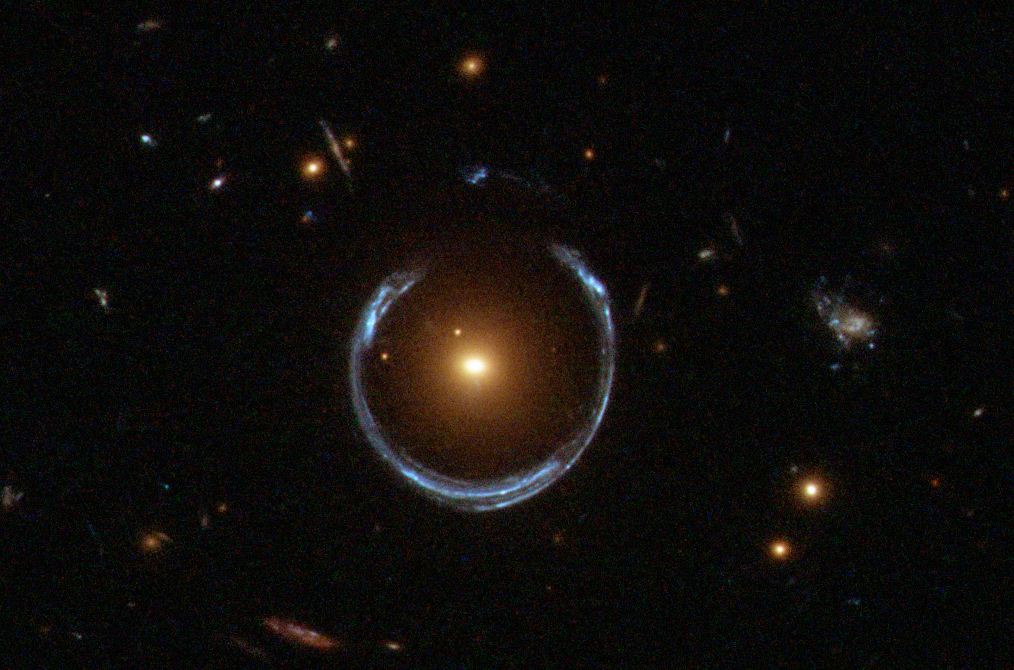

Although Gravity is the weakest of the four fundamental forces, it dominates the universe. It dictates the rotations of galaxies and galaxy clusters; it keeps the planets in motion around the sun; and it keeps us firmly planted on the ground. In this respect, it is a necessary part of life as we know it and a fundamental part of the physics that governs our universe. It’s relatively easy to see gravity at work; we’ve only to look up and see the sun passing overhead. But how does gravity work in relation to things that are very small, like photons (the tiny, massless particles that produce light).
In the presence of a Gravitational field, a photon will bend around the source of the field. For example, if we observe the stars that appear in close proximity to the sun (from our perspective, they seem to be bordering the sun), they will appear marginally out of their “true positions,” as the sun’s gravity bends the photos that are being emitted by the distant stars as they travel past the sun to reach us on earth.
Since our sun is of modest size, the effects are tiny, but they are still measurable. If we look at something that is truly immense (read: a lot more massive than our sun, like a cluster of galaxies), and if they happens to be an excessively luminous body (like a quasar) on the opposing side, we can see smears of light in a circular pattern. This is a view of the photons from the quasar being bent around the cluster. In several instances, fully formed 360 degree rings have been photographed. These are called “Einstein rings,” and they are extremely rare.
If the body (star or galaxy cluster) between the observer and luminous object is heavy enough, we will start to see double and sometimes even triple copies of the object, which is why a lot of the photos of gravitational lensing in action appear to be packed to bursting! In several cases, teams of scientists were able to use this Gravitational lens effect as a magnifying glass, to peer deeper into the universe.
When a photon is in the presence of a black hole, the same bending occurs. Photons will continue bending around the gravity field all the way up to the Schwarzschild Radius (Event horizon), but after the Event horizon of the black hole the escape velocity (speed needed for anything to escape) becomes greater than the speed of light, so photons will drop in never to return (in that state anyway).
WATCH: Common Physics Misconceptions (Video)
Relativity plays a huge role in how we would observe this happening though, but that’s a story for another time.